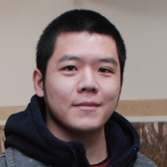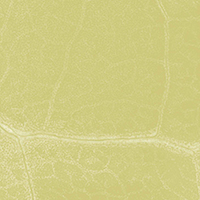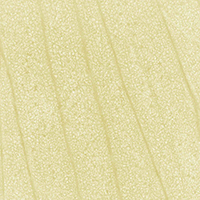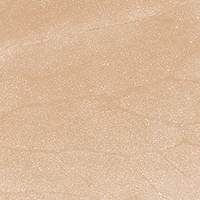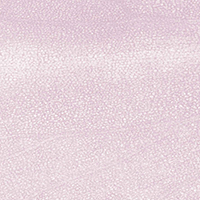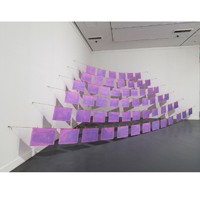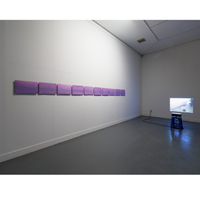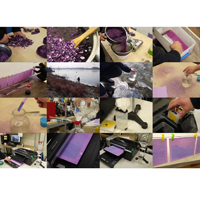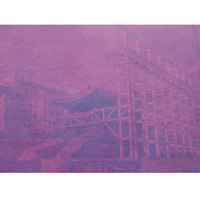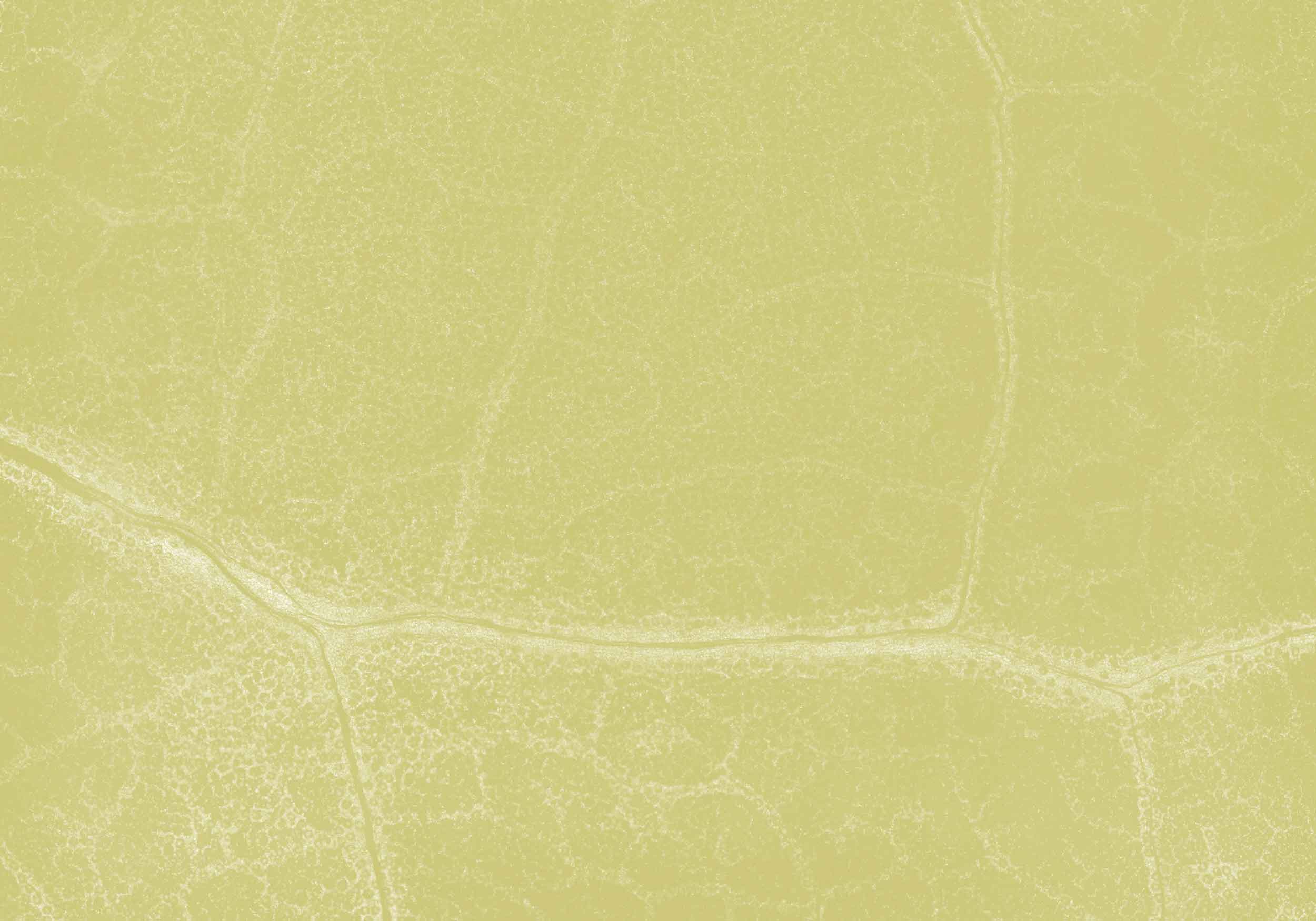
Shamanism, Engineering, and Art - Transition Points in Beak Jungki’s Art
1. Art Historical Model: Either Anachronistic or Clever
The artist as shaman was an archetype that was readily embraced by both art professionals and the general public in 20th-century art. When subversive and iconoclastic art became popular under the name of the avant-garde - and the targets of subversion and iconoclasm were vast, ranging from stereotypes and the existing ‘art’ system to old customs, ideologies, systems, and social structures to name but a few - it was somewhat ironic to see extremely shamanistic and esoteric artists suddenly receiving a lot of attention. However, in the face of this irony, we can see that both shaman-artists and avant-garde art became popular as a reaction to the paradigms of the time, which governed the life of the people inside and out, such as objectivity, efficiency and rationality, as well as the reorganization of society as a whole, centering on science and industry. For example, artists of the time challenged the readily accepted mentality, situations, trends, attitudes, and atmosphere of the time, all of which were rigid and closed. Their job was to mediate the real world and the unrealistic or supernatural world with aesthetics and to satisfy the sensory-perceptual desire to reveal the invisible and unconscious world by exaggerating situations and amplifying true nature.
Similar features can be found in the work of artist Beak Jungki, whose career as an artist took off in earnest in 2007. In a sense, Beak’s work is anachronistic, as were the shamanistic artists of the 20th century, the age of science. This is because, in his artwork, the artist chooses not-so-refined magical rituals to express his wishes, as well as folk remedies that are no different from placebos, foolhardy physical labor, and crafty expressions, in an age where digital technology, science, industry, climate, biomedicine, and all aspects of culture are tightly controlled and re-organized.
First, Beak’s serial artwork 'Vaseline (2007)' is rooted in his childhood experience (the injury of his fingers by fire and the subsequent physical therapy, the trauma caused by his father’s corporal punishment of him as well as his father’s love), but it does not concern the healing, soothing effects of the petroleum-based product. Rather, the artwork Vaseline affirms and strengthens what people want to believe, that is, people’s illogical belief and psychological compensation mechanism, despite the objective facts about the ointment. This serial work, consisting of a head or hands dripping with goops of Vaseline, large Vaseline sculptures (helmet, gloves, patches) and Vaseline fillings in the wall, leaves viewers with the false belief that art itself has the power to embrace the weak and to heal wounds, scars, absences, holes, pain and discord – even though the protective gear made of malleable Vaseline has no such function for obvious reasons.
'Pray for Rain – Mhamid '(2008) is more explicit about its supposed magical power than Vaseline. Beak becomes a self-proclaimed shaman who performs a ritual assuming the authority of a tribal leader with ethnographic roots in charge of resolving social and political conflicts. He melts a sculpture of a lizard made of Vaseline out in the Sahara Desert to make a compass, and then lets the compass evaporate in the heat. How do viewers take the artist’s transformation? Some may be convinced that the magical power of art can change climates and help resolve the chronic problems of a community after watching this artwork, which is only available in the form of a documentary video. However, on the contrary, such actions have an anachronistic element whether they are viewed from the perspective of objective reality or from the history of art, and they can be understood as mere metaphors. The following is an example of the limits of his anachronism and metaphors. Joseph Beuys, the most acclaimed shaman-artist, used animal fat and felt to mediate the netherworld with the living, and the ‘self’ with ‘others,’ annihilating pain with the ecstasy of revival, through his works from the 1960s to the 1980s. As a young, contemporary artist, Beak is trying to close the gap between the natural order and human desire, as well as various social conflicts, through symbol-laden aesthetic performances in the 2000s. In an era when humans can generate artificial rain in select locations and where capitalism is considered the only means of global co-existence, Beak is trying to convince his audience that art has magical power.
Actually, Beak himself reached a similar awareness not long after 'Pray for Rain – Mhamid'. He started to self-examine whether his artwork was “a mere occupational gesture … always involved in some performance as an artist, but one that remained an artistic concept or aesthetics”. After such self-reflection, he shifted away from shamanistic performances and methodology, and has focused on more scientific cognition and mechanisms ever since. For instance, he began to observe and analyze subjects, to have an actual relationship with the subjects (through use, interpretation, and composition), and to actively incorporate experimentation and mechanical manipulations into the process of his artwork. This is where his anachronism hints at his cleverness. This cleverness does not simply mean self-realization of the limitations and contradictions of his artwork. It rather means that Beak touched on some precedent styles and eventually satisfied the transitional/implementational nature of contemporary art by starting out his artistic career with techniques, expressions, archetypes and discourses that are noticeably different from those of his peers, whether through elaborate planning or coincidence.
2. Aesthetic Effects: Anti-science and Anti-art
If we were to choose the most experimental of Beak’s works in the literal sense, the serial work 'Is Of' would immediately spring to mind. The final format of the series is photography. Surprisingly, the photographs are images created with pigments extracted from subjects. For instance, the photograph of autumn foliage at Seoraksan Mountain was printed with colorants extracted from red, yellow and green fallen leaves from Seoraksan Mountain, using all kinds of equipment. While mimicking our flawed habitual conception that banana milk is yellow and skin-toned crayon is the color of human skin (Incidentally, in Korea, light apricot-colored crayons are often referred to as ‘skin color’), Beak’s photographs tell their viewers that there is some truth to such misconceptions, and his serial work 'Is of' was made possible thanks to his repeated experiments. He tested with various solvents and separators to obtain the printable colors that he had in mind. He even went on to modify his printer and develop his own components. This gives the series 'Is Of' a technical background that follows the theory and practice achieved by the use of machine equipment. However, because his goal is purely driven by art, and because the results are works of art, his engineering stops halfway shy of being scientific.
Another interesting artwork is 'Sweet Rain', a piece of installation art that was set up at the Insa Art Space in 2010. He used architectural engineering to convert an entire room to an artificial ‘rain room.’ It is an artwork that shows the extent of Beak’s anti-scientific methodology. Water was stored in the second story of the building where the exhibition was taking place. There is an installation along the flow of the water that mixes the water with saccharin to make the water sweet. Then the water flows through bumps and pipes until it reaches the rain room in the basement. Drops of water from the ceiling are collected at the floor and discharged outside the building. The entire system, including devices, was designed by Beak himself. One missing piece of hardware could have compromised the outcome of Sweet Rain. Sweet Rain is simultaneously a work of installation art and a viewer-participatory performance that was made possible due to the strictly real waterworks and construction, but it is right along the lines of contemporary art in that the artist adds some small and big changes to the artwork, giving it life and character. In that sense, since completing the work 'Pray for Rain – Mhamid', he has moved away from metaphor to realistic, aesthetic and conceptual works through self-reflection, or practical and experience-based art.
To summarize, the direction of his art is somewhat anti-scientific. On the other hand, it is anti-art. The reason why Beak’s artwork is anti-art, in other words, the reason why it is close to art rather than unique or independent art, is because his ideas and aesthetic methodology still remain within the scope defined by contemporary art. There are slight differences in content and expression, but his work still remains under the shadow of space-specific art, participation and intervention art, and conceptual art.
Such tendencies cannot be overlooked in his project 'Memorial Antenna'. The program began during his time in Europe where he was attending a residency program. It involved transforming national landmarks such as the Maria Valéria Bridge (built in the 19th century, the bridge connects Slovakia and Hungary) into a giant antenna that can receive radio signals. To realize this program, the artist had to research local history and current affairs, create a critical narrative and a point of intervention/participation, and complete the artwork by changing the monuments physically and/or symbolically. As a piece of art, it could be categorized as a conceptual installation under the premise of space-specific intervention. Beak’s art world has all the important key elements of contemporary art backed by superior methodology, and thus speaks for the mainstream. Such tendencies are not a liability for artist Beak Jungki; nor will they stand in the way of the artist’s future growth and success. In fact, Beak has one foot in contemporary art, a field that is often referred to as diverse and attractive, especially in the planning process of several art events. His artwork has been elevated to a clear and sophisticated state which is enough to attract the layman’s attention. However, it would be more appropriate to say that Beak is still in a transitional phase because he has yet to discover his own style. He is on track toward finding an art form that is complete in itself (rather than being anti-scientific or anti-art), instead of being an “occupational gesture” as he himself has pointed out. Whether he will stay on this track until its destination or go off track and pave a new way for himself remains a mystery. That is Beak’s decision to make.
Kang Su-mi (Professor of Art Theory & Aesthetics, Dongduk Women’s University)






